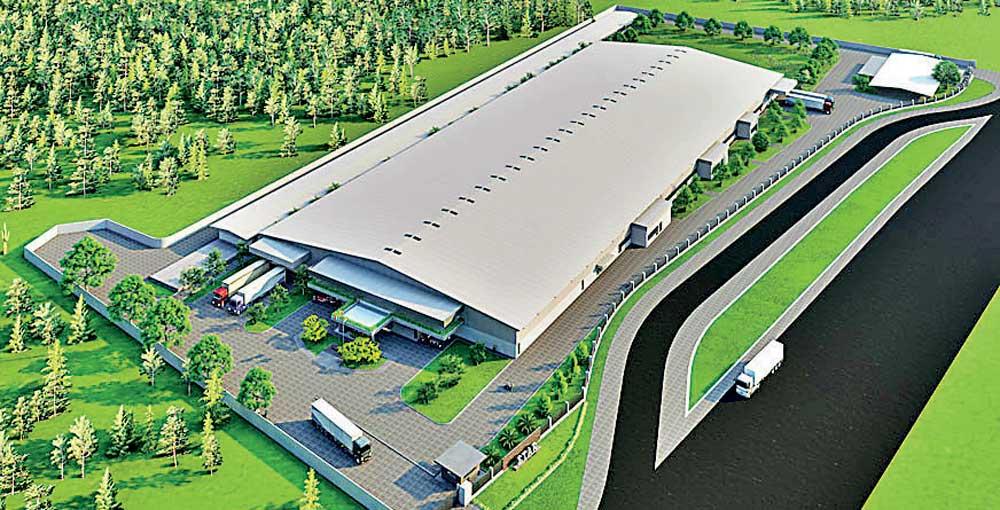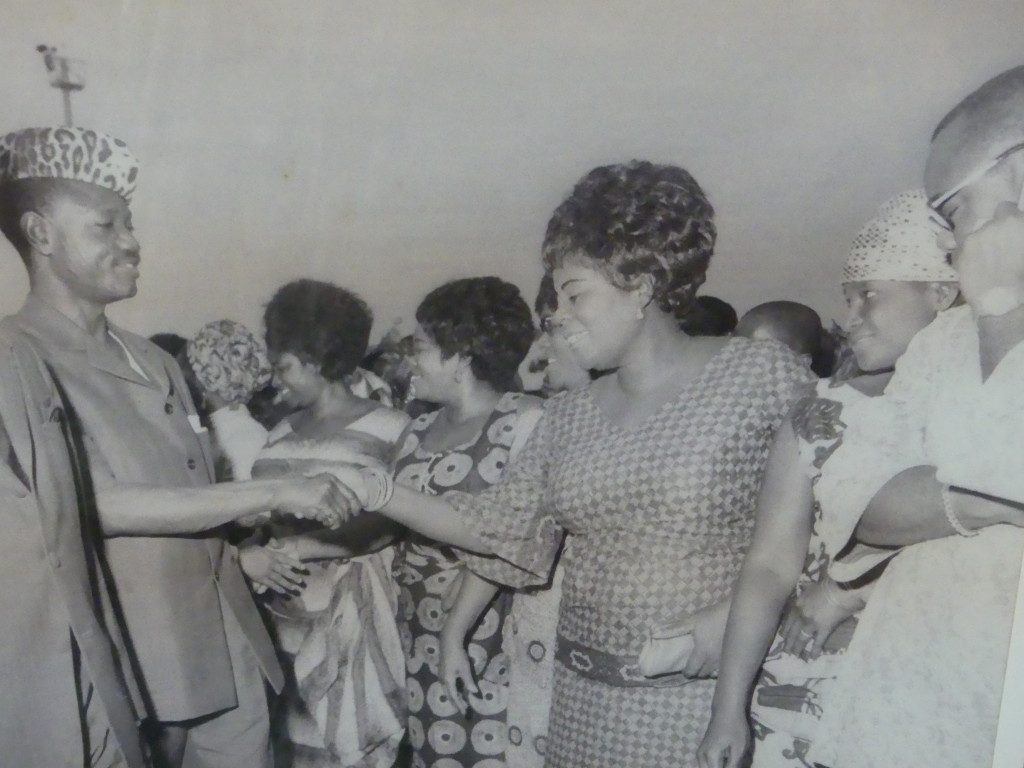Sri Lankan apparel manufacturer moves into Togo
West African cotton value chain requires US$5bn in investment
By Amit Jain and Jaco Maritz
 Photo credit: Daily Mirror
Photo credit: Daily Mirror
In a significant vote of confidence that could help connect West Africa to the multi-million dollar global textile value chain, Star Garments, a Sri Lanka-based garment-maker has decided to set up a new export-oriented apparel producing factory in Togo.
Cotton is the main cash crop of Togo and accounts for 20% of its export earnings. It produces somewhere between 56,000-66,000 tonnes of cotton every year, but most of it exported as raw cotton thereby denying Togo most of the value that its produce can get if it were to make garments and export.
All that, however, could start to change once the Star Garments factory starts to cut, assemble, and stitch a variety of clothing items at the brand-new factory which is coming up on the outskirts of the capital Lome. The project costs US$25m and is being partly financed by a US$15m loan from the International Finance Corporation (IFC). The factory will be in the Plateforme Industrielle d'Adétikopé (PIA), an industrial park developed by Arise Integrated Industrial Platforms (ARISE IIP), in which Singapore-based Olam was previously a shareholder before divesting.
Star Garments operates 11 factories in Sri Lanka and works with brands such as Marks & Spencer, Ralph Lauren, and Lilly Pulitzer. According to Managing Director Arumugampillai Sukumaran the Star Garment factory in Togo will present a cost-competitive alternative to its existing facilities in Asia. With sustainability becoming more important in the clothing industry, Togo, offers the company’s customers a compelling farm-to-product opportunity. With only 55kms of coastline and a 1700 kms of land stretching up to Burkina Faso, Togo is a very thin sliver of land sandwiched between English-speaking Ghana and French-speaking Benin. It is the third smallest country in West Africa. But despite its small population and landmass, the country offers investors attractive opportunities in export-oriented low wage manufacturing such as textiles. It is also home to Lome - the busiest port in West Africa.
 Nana Benz. Photo credit: Togo Archives
Nana Benz. Photo credit: Togo Archives
Nana Benz of Togo
In 1970, Togo was the centre of commerce in West Africa, with the textile industry it’s the primary source of revenue growth. Togo’s textile industry at the time was led by female entrepreneurs who came to be popularly called Nana Benz – derived from the adulation they received for creating wealth, which they were not shy of displaying publicly – not least by driving in Mercedez Benz cars.
By the early 2000s, however, the market for wax print, that the Nanas were best known for, vanished as China entered the global textile and garment export business. This prompted efforts to boost cotton exports. Cotton production in Togo grew from 19m kgs to 44m kgs. By 2017, China accounted for half the country’s total cotton exports. But with duty free access to Western markets and ready availability of low-wage workforce Togo is once again trying to become an attractive investment destination for garment manufacturers. By climbing the global textile value chain Togo could become a textile export hub of West Africa. The strategically and commercially important port of Lome already serves as a transit port for goods moving in out of West Africa and is a critical trade link that serves landlocked Mali and Burkina Faso. Benin, Burkina Faso, Chad, Côte d’Ivoire, and Mali predominantly export their raw cotton for processing abroad. If Togo (along with Benin) succeed in developing a Bangladesh-style garment manufacturing industry, the economic returns to the entire region would be significant.
New prospects
According to one estimate export-oriented garment manufacturing in Africa represents an untapped industry worth US$1.5bn. African domestic apparel consumption itself is projected to reach US$56bn by 2025. A recent study indicates that establishing local industries to transform cotton into fabric and garments could generate 500,000 jobs. The research suggests that within a decade, cotton growing West African states nations could process up to 25% of their cotton domestically. But this would necessitate an investment of approximately US$5bn in production facilities and workforce training. Although Africa produces 10% of the world's cotton it remains heavily reliant on imported, mostly hand-me-down, used or discarded garments. This has had a devastating impact on the domestic textile industry. Countries such as Nigeria, that once used to have a thriving textile manufacturing could not compete with the likes of China and Bangladesh. Lack of infrastructure, overvalued currencies and paucity of incentives have led to the almost complete ejection of West Africa from the global textile value chain. But the emergence of Special Economic Zones (SEZ) like ARISE IIP and Lagos Free Zone – designed and constructed mostly by Asian investors - has seen agro-processing industry and low-cost manufacturing return.
In 2023, Togo attracted US$34 million in Foreign Direct Investments (FDI). Much of this has come from Asia to zones like the PIA, a large well equipped SEZ designated for the textile and garment industry in Togo. The announcement of the Star Garments factory coincides with other notable developments in the region’s clothing and textile industry. Recently, the first consignment of children’s leggings destined for the French chain store KIABI was exported from the Glo-Djigbé Industrial Zone in Togo’s neighbour, Benin. By the end of 2024, KIABI is expected to source 2m pieces of clothing from Benin, with this number projected to rise to 4m in 2025. Additionally, in 2022, the IFC committed US$8m to expand the garment production capacity of Ghana-based DTRT Apparel Group. Founded in 2013, DTRT supplies major US and European brands, including its anchor customer Red Bull, which has also invested in the company.
References
‘DTRT, West Africa's largest clothing manufacturer, announces investment from Verod Capital and Red Bull’, Verod Capital, 15 Aug 2019
‘IFC supports DTRT Apparel Group’s expansion, job creation strategy in Ghana’, IFC, 21 November 2022
‘Sourcing and manufacturing at its best’, Star Garment Group, 2022
‘Olam Group completes the divestment of remaining equity stakes in ARISE IIP and ARISE IS’, Olam, 03 January 2023
‘Star Garments Group Togo CMT expansion’, IFC, 30 October 2023
‘Turning cotton to clothes could create 500,000 jobs in West Africa’, International Trade Centre, 11 June 2024
‘IFC and Star Garments partner to expand textile and apparel manufacturing in Togo’, IFC, 08 July 2024
‘Glo-Djigbé Industrial Zone (GDIZ) is exporting the first batch of 80,000 ready-to-wear garments “Made in Benin” for the french brand KIABI’, Glo-Djigbé Industrial Zone, 09 July 2024
‘Star breaks new ground as it explores the possibility of international expansion’, Star Garment Group, Accessed 17 July 2024
‘Togo cotton and textile industry’, Arise Integrated Industrial Platforms, Accessed 17 July 2024
‘Sourcing and manufacturing at its best’, Star Garment Group, 2022








